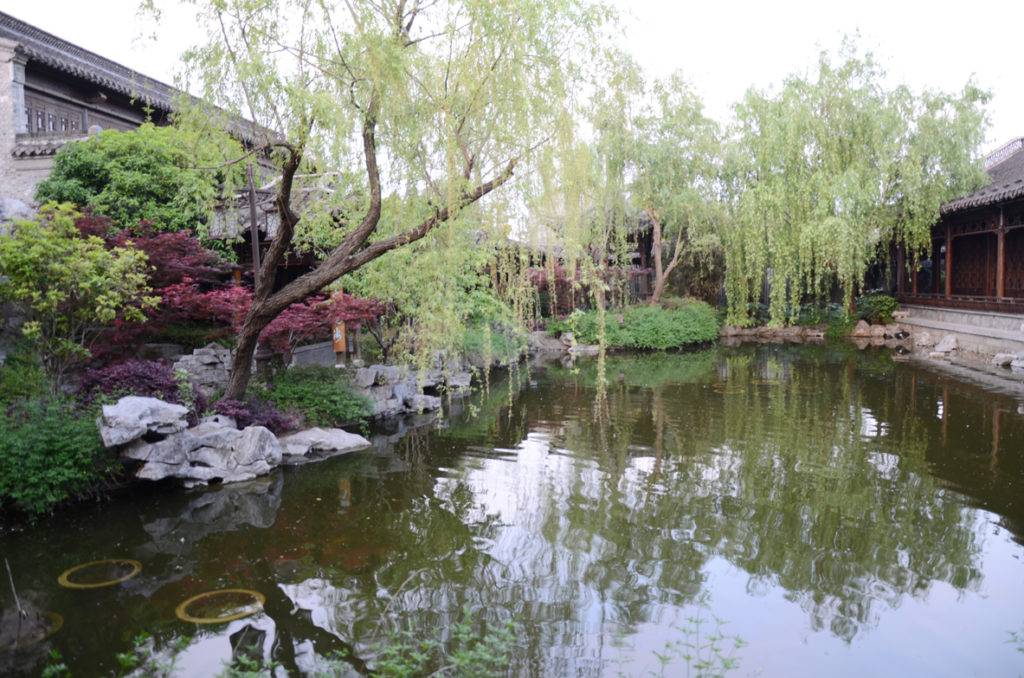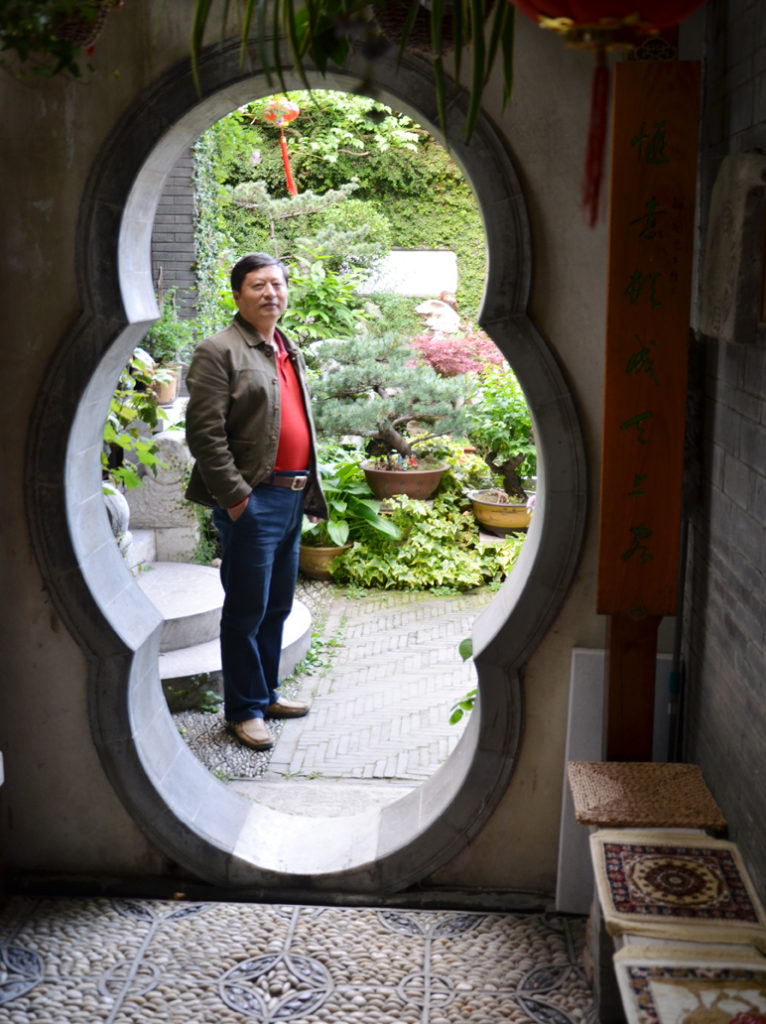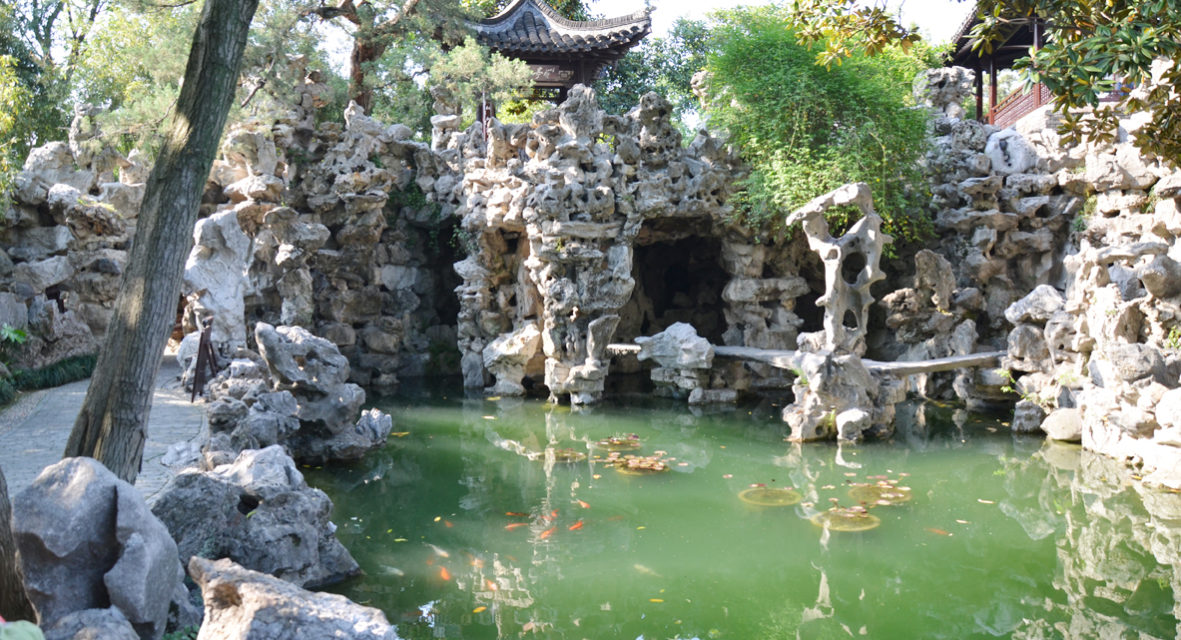
Built by salt merchants, Yangzhou’s gardens were designed to both inspire and relax. Photo by David DeVoss
By David DeVoss
Because of its fertile soil, abundant water and temperate climate, Jiangsu Province is known as China’s “Land of Fish and Rice.” In Yangzhou, the ancient Southern capital that sits in the middle of the province, the riches of Jiangsu are expressed in the design, construction and careful maintenance of magnificent urban gardens built by rich merchants centuries ago.
All the arts come together in a Yangzhou garden, which is designed to inspire, painting, poetry and calligraphy as well as friendly conversation and reflective thought. In the Ho Family Garden built during the Qing Dynasty, poems, reveries and imaginative musings were engraved on stone tablets and set into the walls of a 430-meter two-storied winding corridor. These ideas from the past combine with the contemporary sights and sounds of the garden in a way that allows the Ho Garden and Residence to appeal to the mind and heart, as well as the senses.
The mansion itself captures the regal demeanor of the Qing Dynasty in its lattice doors, carved screens, rosewood chandeliers and innovative floor tiles that evoke ocean waves or calm water depending on their color and positioning. An open-air pavilion perched on an island in the middle of a fishpond is the focal point of the massive mansion’s garden. Reached by a narrow zigzag walkway, it offers contemplative views of elaborate rockeries, stands of hydrangea and the soaring finials on surrounding tile roofs.
Visitors from abroad immediately will see how different Chinese gardens are from those created with Western wealth. There are no broad vistas or grassy fields. Indeed, a Chinese scholar visiting England in the 1920s observed that “a mown and bordered lawn, which, while no doubt of interest to a cow, offers nothing to the intellect of a human being.”
For Westerners, vast lawns harken back to bucolic pastures separated by hedgerows or linear stands of trees where men lived simply alongside a pacified version of nature. Most Han Chinese, however, are rice growers for whom pastures evoke cattle-raising nomads – barbarians! – raiding south of the Great Wall. They see places like the Huntington Garden in Pasadena, CA or New York’s Central Park as unimaginative, uneventful and slightly off-putting.
Chinese gardens are designed around two main philosophies: Confucianism, which dictates how people should live in society, and Daoism (Taoism), which seeks to discover how people can best accommodate themselves to the universe they inhabit. The two philosophies come together in Yangzhou’s Ge Garden, a flowing assortment of rock grottos, ponds and bamboo groves arrayed around an 18th Century mansion built by a millionaire salt merchant over the course of 23 years.
The reception halls and family housing follow each other in an orderly procession, fulfilling the Confucian ideal of symmetry and rectitude. The garden, however, has Daoist roots with twisting pathways through rock formations, different types of bamboo and irregularly shaped gates that allow wind, light and shadow to play on the garden surfaces.
The garden actually is divided into four “seasons,” each experienced in turn as you walk along the paths. The summer garden is lush and verdant with profusions of flowers that subtly yield to brighter autumn foliage. The winter section is subdued with white stepping stones that almost seem like patches of broken ice.

Yangzhou has over 100 private gardens. Du Xiang Kai of the China National Artist Association welcomes visitors to his garden at 167 Dongguan St. Photo by David DeVoss
Before China’s decade-long Cultural Revolution Yangzhou had 80 magnificent gardens. Rampaging Red Guards reduced that number to 12. But those that remain are some of the best you’ll find in China.
It’s important not to rush through a Chinese garden. Allow at least two hours, more if you find inspiration, and you’ll find yourself inside a three-dimensional painting filled with winding lakes, cul-de-sacs, bridges, pathways floored with pebble designs, moon-doors and pavilions sitting atop rockeries that overlook tea houses, terraces and libraries. Sit. Watch. Listen. That’s what the Chinese will be doing.
You will see a lot of rocks. But if you look at the mineral swirls, striations and the way the rock is hewn you’ll see that each is a point on a larger canvass. ![]()
_________________
David DeVoss is a senior correspondent for the East-West News Service


